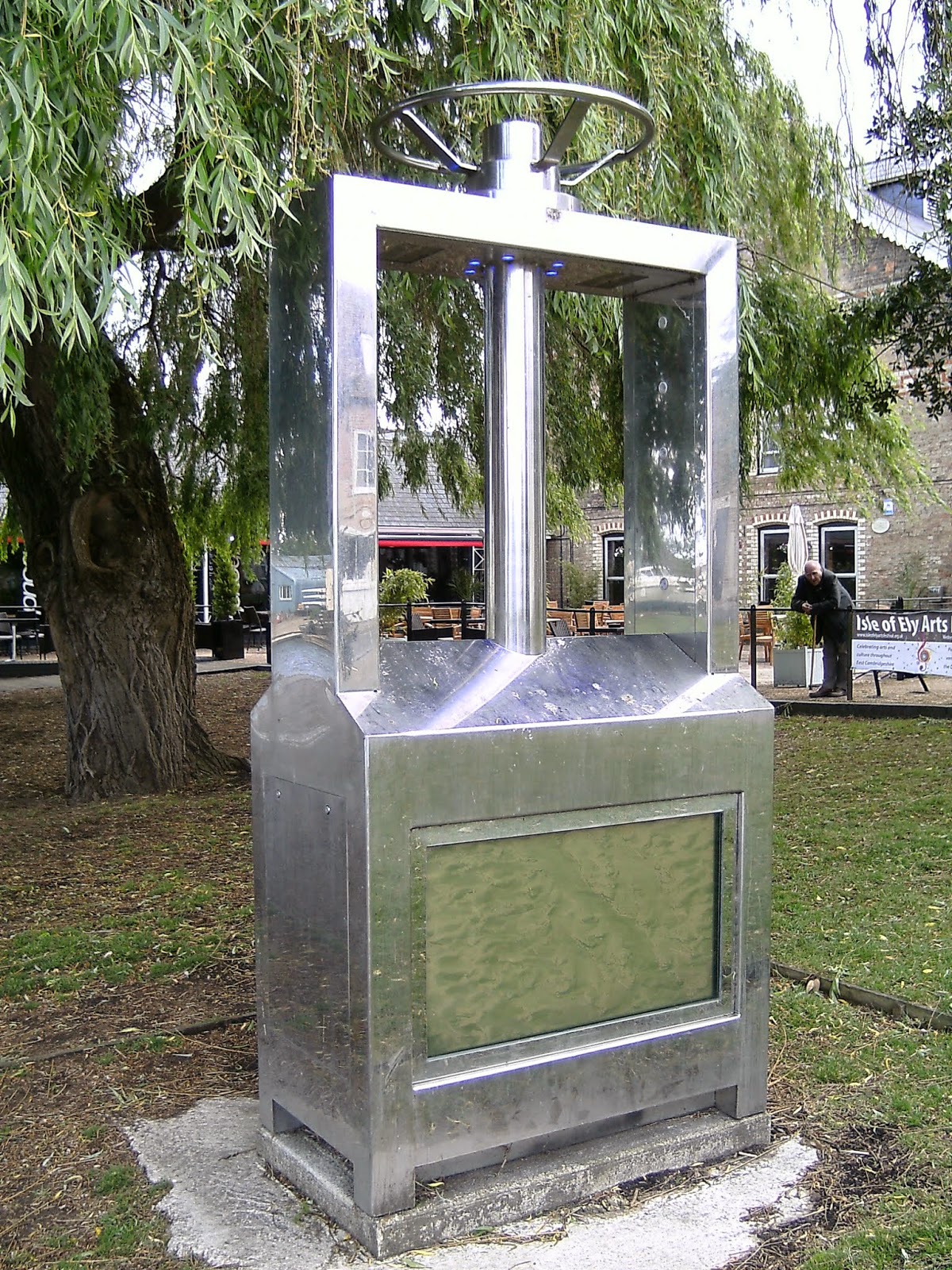It is certainly true that I once saw a tourist information site that said Ely was a meteorite in the middle of the fens that made sure that Ely women were exceptionally buxom and Ely men especially well endowed. I must say that the Ely women and men looked perfectly normal to me. And it isn't a meteorite, it's a block of Kimmeridge clay. Anyway Ely lies about 20m above the normal fenland although the fenland is shrinking year by year as it dries out. Ely is the setting for the story in Tales of the Unexpected called 'the Flypaper' by Elizabeth Taylor (no not that one). From that era at the very beginning of Thatcher's reign, it has the atmosphere of a sleepy cathedral town where nothing much happens, surrounded by fenland where anything could happen. You'll have to watch the thing yourself on youtube but it is a genuinely terrifying story and the look of fright and hopelessness as the protagonists sit down to tea needs to be seen to be believed. Ely's riverside has now been developed with cocktail bars and all sorts of thatchery things, including some interactive works of light sculpture (it sez 'ere) like this one called Sluice.

Ely's most famous resident is
Oliver Cromwell once the Lord Protector of England. The Tourist information centre is set up in his old house. However he only inherited it from his uncle in 1636 together with property in the East of England and the right of farming taxes for the bishop. THe house is truly old and dates from the 13th Century, with some wall paintings concealed behind panelling in the parlour where an introductory film is shown. From there we move into the kitchen where we look at Elizabeth Cromwell's recipes. I definitely want to make a sack posset containing as it does cream and sherry.

Then it is up to the bedroom where we get to try on puritan hats, helmets, clothes and stuff, while hearing about how the church was changed by Charles. Moving on into an armoury we learn about the civil war and the equipment of Cromwell's soldiers. We arrive in the study and have to decide if Cromwell is a hero or a villain. Perhaps I'm a little too balanced because, although he did some good things, and a lot of our freedoms today were hard won by the civil war, I think the circumstances of the 17th Century caused a lot of desparation: the stuarts were particularly bad rulers and anybody would have wanted to rise against them. If anybody doubts me compare the Stuarts with the Hanoverians. We see Cromwell die in White Hall and learn that his head is buried in Sidney Sussex College. So overall, Cromwell's house is an interesting hour.
Not so the Ely Museum, the former bishop's gaol again from the 13th Century. The Court in classical style looks better than this ordinary looking house.


The exhibits are chronological and rather a lot is made of the use of the building as a gaol.
The culmination of Ely is it's cathedral with octagon, tower tours and stained glass museum. I arrived there rather too late to take any advantage of it so contented myself with looking at the sculptures and some of the window glass.
Hans Feibusch and
Jonathan Clarke have sculptures in the lobby. Hans Feibusch's Christus @The arms outstretched in welcome show the wounds of crucifixion; the face shows the strength of the compassion with which Christ looks on the world.' Jonathan Clarke's The Way of Life 'is made of cast aluminium and has nine sections, each differently jointed. Like the journey of faith, its path is irregular and unpredictable; and just as the journey is sometimes hard, sometimes joyful, the surface texture and colour also vary.'
Some of the windows were dedicated to commercial concerns in the town. I noticed Barclays Bank and British Railways Board. The cathedral outside is stunning too.
There was no evensong in the Cathedral today so I had to go elsewhere for that, which was a big disappointment. Still it gave me more material to blog. Watch this space.
 Here is part of a line up for judging.
Here is part of a line up for judging.
 and the line up of judges
and the line up of judges
 Of course while they are getting tattooed the men usually put on a scowling face that they hope says 'I'm a big hard geezer and I'm feeling nothing'. However it's a fixed expression that really says 'I am desperately trying not to wince in pain in case it ruins the artwork'. Both tattooist and subject need a steady hand.
There are also vintage car displays,
Of course while they are getting tattooed the men usually put on a scowling face that they hope says 'I'm a big hard geezer and I'm feeling nothing'. However it's a fixed expression that really says 'I am desperately trying not to wince in pain in case it ruins the artwork'. Both tattooist and subject need a steady hand.
There are also vintage car displays,  entertainment in the form of fashion shows,fire eaters anything spectacular really as well as general tomfoolery. The compere, Paul Sweeney
entertainment in the form of fashion shows,fire eaters anything spectacular really as well as general tomfoolery. The compere, Paul Sweeney  a slightly built man (in the red shirt in the above pic) asked if somebody in the crowd could bench press him! Nobody rose to the challenge this time alas but I would have liked to have seen that. I also met a friend there which was unexpected but good fun.
a slightly built man (in the red shirt in the above pic) asked if somebody in the crowd could bench press him! Nobody rose to the challenge this time alas but I would have liked to have seen that. I also met a friend there which was unexpected but good fun.








